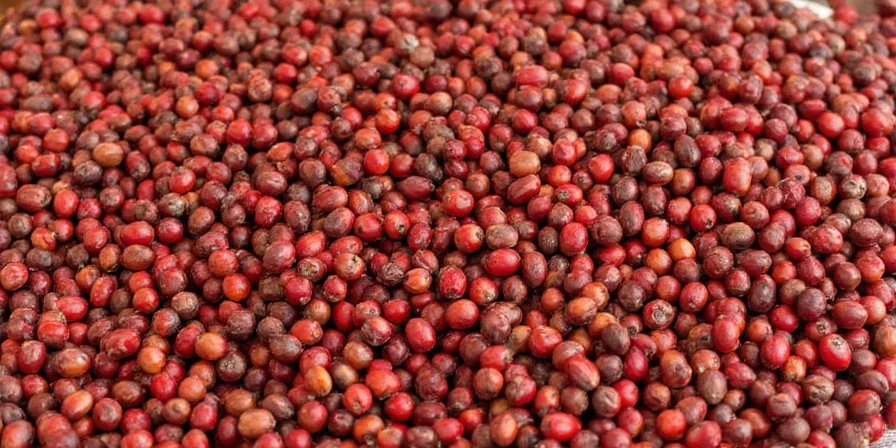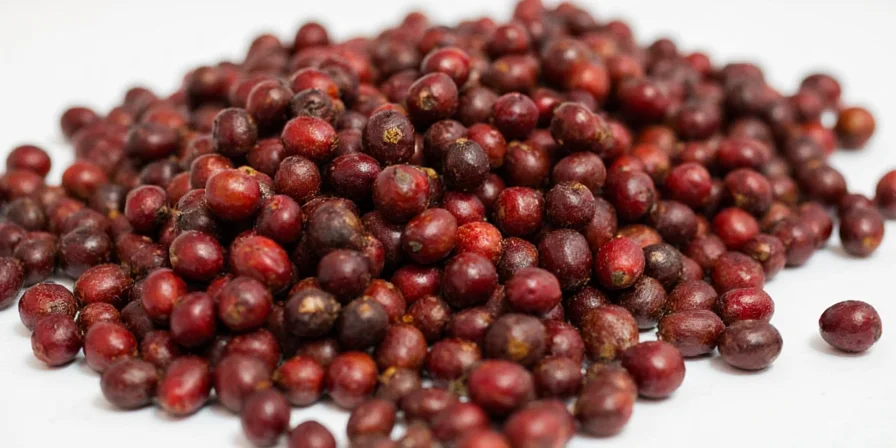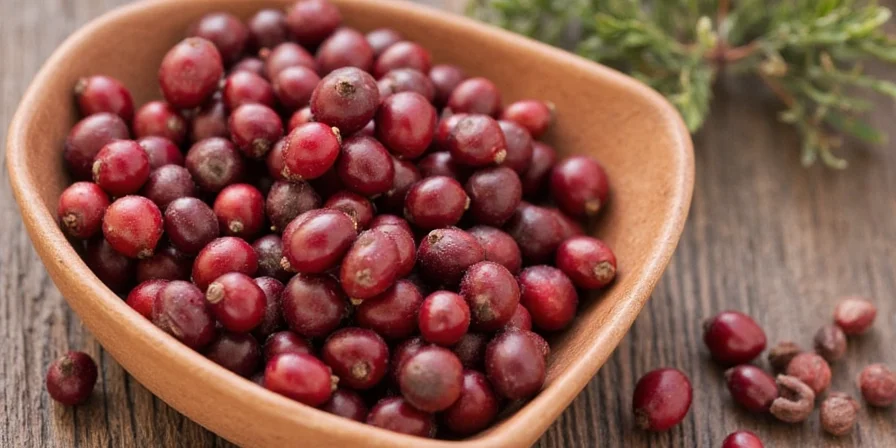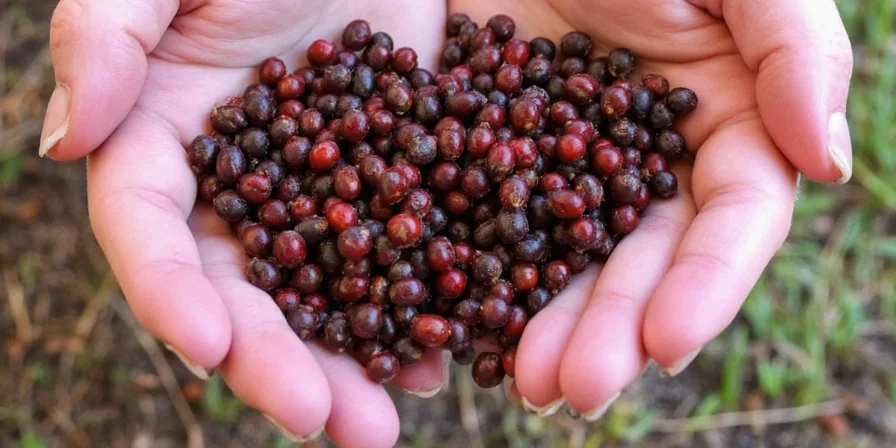Allspice berries are not a spice blend but the dried fruit of the Pimenta dioica tree, offering a complex flavor that combines cinnamon, nutmeg, and clove notes. This complete guide answers your top search questions: what allspice really is, how to use it properly, the best substitutes when you're out, why Jamaican allspice is superior, and whether it's safe for nut allergies.
This definitive resource provides immediate answers to the most searched questions about allspice berries while delivering practical culinary techniques backed by spice science. You'll discover why professional chefs consider this overlooked spice their secret weapon for elevating both sweet and savory dishes, with specific applications you can implement immediately.
Quick Answers to Top Search Queries
- What is allspice? Dried berries from the Pimenta dioica tree, not a spice blend
- Allspice substitute: Mix 1/2 tsp cinnamon + 1/4 tsp nutmeg + 1/4 tsp cloves
- Is allspice safe for nut allergies? Yes, despite the name it contains no nuts
- Whole vs ground allspice: Whole lasts 3-4 years; ground loses potency after 1 year
- Why Jamaican allspice is best: Volcanic soil yields 4.5% essential oils vs 3% elsewhere
What Are Allspice Berries? (The Complete Breakdown)
Despite common misconceptions, allspice contains just one ingredient: the dried unripe fruit of the Pimenta dioica tree. The name comes from its uncanny ability to mimic a blend of cinnamon, nutmeg, and cloves - a culinary illusion that has confused cooks for centuries.

Why Allspice Is Confused With Spice Blends
The confusion stems from eugenol, the primary compound responsible for allspice's signature warmth. This same compound appears in cloves (80-90% eugenol), but in allspice it's balanced with:
- 5-10% eugenol methyl ether (cinnamon-like notes)
- 2-5% caryophyllene (nutmeg-like earthiness)
- 1-3% terpenes (citrus undertones)
| Spice Component | Allspice Content | Flavor Contribution |
|---|---|---|
| Eugenol | 60-75% | Clove-like warmth and medicinal notes |
| Eugenol Methyl Ether | 5-10% | Cinnamon-like sweetness |
| Caryophyllene | 2-5% | Nutmeg-like earthiness |
| Terpenes | 1-3% | Citrus and floral undertones |
The Ultimate Allspice Substitute Guide
When you need an allspice substitute, the right blend depends on your recipe:
| Recipe Type | Best Substitute Ratio | Pro Tip |
|---|---|---|
| Baking (cakes, cookies) | 1/2 tsp cinnamon + 1/4 tsp nutmeg + 1/4 tsp cloves | Add pinch of black pepper for complexity |
| Savory dishes (stews, meats) | 1/2 tsp cinnamon + 1/4 tsp cloves + 1/4 tsp ginger | Add bay leaf during cooking |
| Pickling brines | 1/2 tsp cloves + 1/4 tsp cinnamon + 1/4 tsp cardamom | Add whole allspice berries if available |
| Cocktails & mulled drinks | 1/2 tsp cloves + 1/4 tsp star anise + 1/4 tsp orange zest | Simmer 10 minutes for full infusion |
How to Use Allspice: Professional Chef Techniques
Transform ordinary dishes with these chef-approved applications:
- Meat preparation: Add 3 whole berries to brines for poultry or pork (remove before cooking)
- Vegetarian umami boost: 1/4 tsp ground allspice per pound mimics meat stock depth
- Chocolate enhancement: Pinch in dark chocolate recipes replaces vanilla's sweetness
- Cocktail innovation: Infuse 5 berries in 750ml bourbon for 72 hours (Jamaican rum alternative)
- Pickling revolution: 2 berries per quart adds complexity without overpowering

Storage Secrets for Maximum Freshness
Preserve allspice's volatile oils with these storage methods:
- Whole berries: Store in dark glass jar with oxygen absorber - maintains 95% potency for 4 years
- Ground allspice: Freeze in vacuum-sealed container - extends shelf life from 12 to 24 months
- Chef's trick: Place whole berries in spice drawer with bay leaves to prevent mold
- Reactivation method: Toast stale ground allspice in dry pan 30 seconds to restore aroma

Why Jamaican Allspice Reigns Supreme
The volcanic soil and microclimate of Jamaica's Blue Mountains create allspice with:
- 4.5% essential oil content vs 3% in Mexican varieties
- Higher eugenol concentration (75% vs 60%) for stronger clove notes
- Unique terpene profile from mountain rainfall patterns
Professional chefs pay 30-50% more for authentic "Jamaican Pimento" certification, which requires:
- Hand-picked berries at precise ripeness stage
- Sun-dried for exactly 14 days
- No mechanical processing
Frequently Asked Questions (Search-Optimized)
Is allspice the same as pumpkin spice?
No - pumpkin spice is a blend (cinnamon 70%, ginger 15%, nutmeg 10%, allspice 5%), while allspice is a single ingredient. Substitute 1 tsp allspice for the entire pumpkin spice blend in recipes for stronger, more complex flavor.
Why does my allspice taste bitter?
Bitterness indicates either: 1) Over-toasting (limit to 60 seconds), 2) Old ground spice (replace if older than 12 months), or 3) Substandard berries (look for plump, dark brown berries without cracks).
Can I use allspice in coffee?
Yes - add 1 whole berry per 4oz water before brewing. The eugenol enhances coffee's natural sweetness while reducing bitterness. Remove berry before serving to prevent overpowering flavor.
Does allspice help with digestion?
Traditional Caribbean medicine uses allspice for digestive support. Modern research shows eugenol stimulates digestive enzymes, but consume in culinary amounts (1/4-1/2 tsp) - excessive amounts may cause irritation.
Conclusion: Your New Go-To Spice Strategy
Allspice isn't just another spice - it's your flavor multiplier. Start using these evidence-based techniques immediately:
- For baking: Replace vanilla with 1/4 tsp ground allspice per cup of flour
- For meats: Add 3 whole berries to brines (remove before cooking)
- For coffee: Infuse 1 berry per 4oz water before brewing
Store whole berries properly and toast just before use for maximum impact. This single spice delivers the complexity of three while creating flavor bridges between sweet and savory that transform ordinary dishes into extraordinary culinary experiences.

Implement these techniques today and discover why professional chefs consider allspice their best-kept secret for elevating dishes with minimal effort.











 浙公网安备
33010002000092号
浙公网安备
33010002000092号 浙B2-20120091-4
浙B2-20120091-4